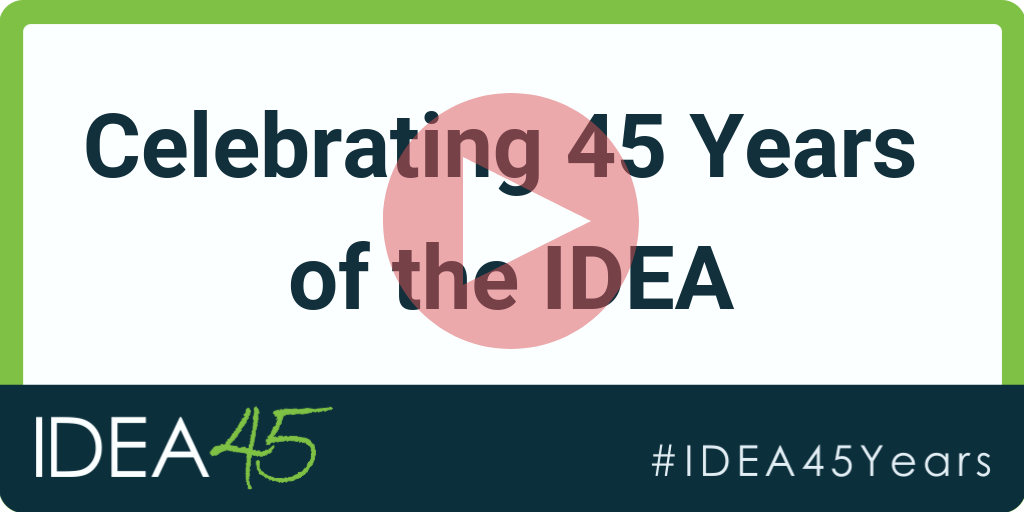IDEA—45 Years Later
History
The IDEA has experienced numerous changes over the years in an effort to better support infants, toddlers, children and youth with disabilities. Find out more about the history of IDEA.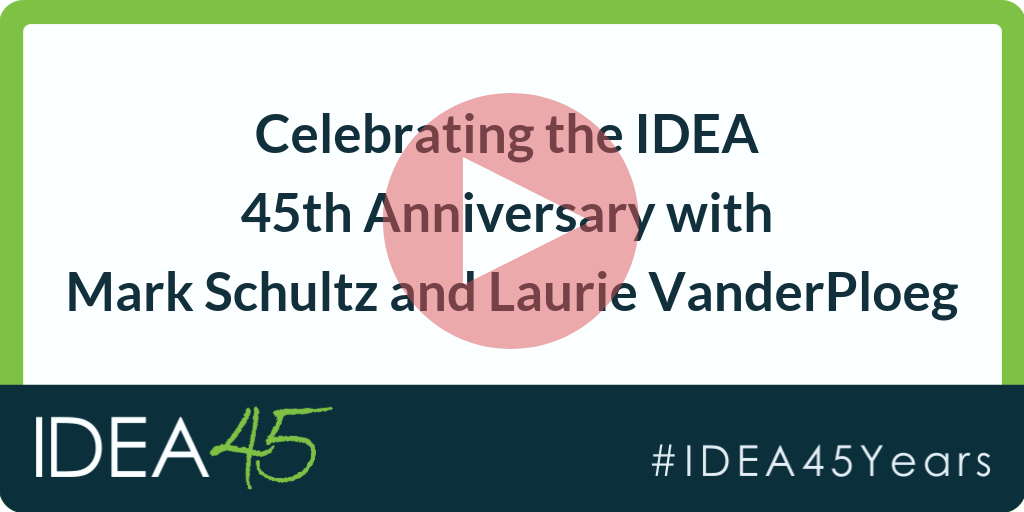 |
Celebrating the IDEA 45th Anniversary with Mark Schultz and Laurie VanderPloegRSA Commissioner Mark Schultz, delegated the authority to perform the functions and duties of the Assistant Secretary for OSERS, and OSEP Director Laurie VanderPloeg discuss the past, present and future of the IDEA. |
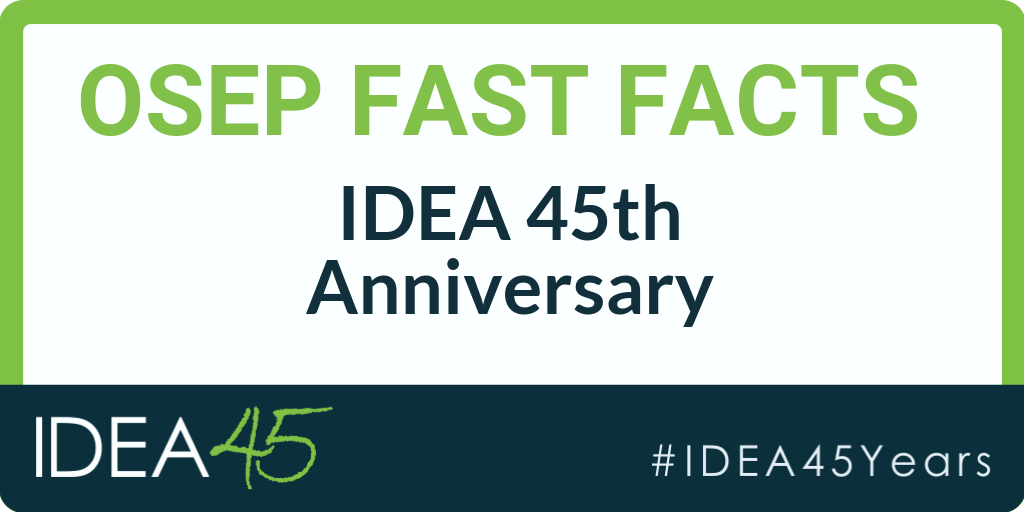 |
OSEP Fast Facts: IDEA 45th AnniversaryThe newest OSEP Fast Facts highlights key changes to the IDEA during the last 45 years as well as facts and figures related to infants, toddlers, children, and youth with disabilities and teachers and services providers. |
Blogs
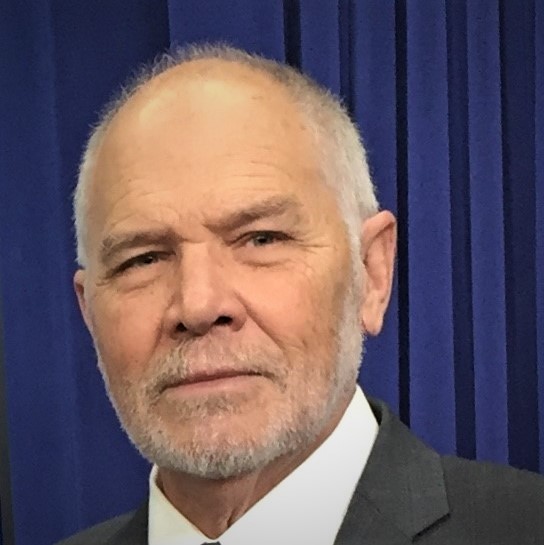 |
IDEA Deserves Our Continued Passion, Advocacy and SupportMichael Norman started an internship with the National Association of State Directors of Special Education in 1976, shortly after the Education for All Handicapped Children Act was signed into law. Learn how he has since spent his career as a special education advocate. |
 |
Forty-five Years of IDEA-Funded Research Supporting a “Free Appropriate Public Education”Douglas Fuchs and Lynn Fuchs reflect on research facilitated by the IDEA legislation and successive reauthorizations. |
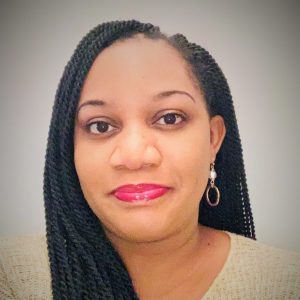 |
A Milestone for Civil Rights: Celebrating 45 Years of IDEAKanika Littleton, Michigan Alliance for Families director and parent of a child with a disability, reflects on the role parents, families and advocates have played in calling for equity in education. |
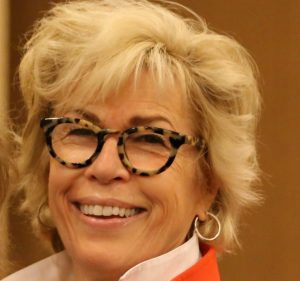 |
The Personnel Who Deliver the Promise of Idea Into the Lives of Children and FamiliesJane West started her career as a special educator in 1973, a couple years before the enactment of the law now known as IDEA. She knew she found her calling when she saw low expectations set for her students. |
 |
Happy Birthday, IDEA!George Sugai, University of Connecticut’s Naeg School of Education professor emeritus, began his special education career in the fall of 1974. He shares his experiences of working in a classroom at the start of IDEA and how the IDEA helped focus and shape his career. |
Video Stories
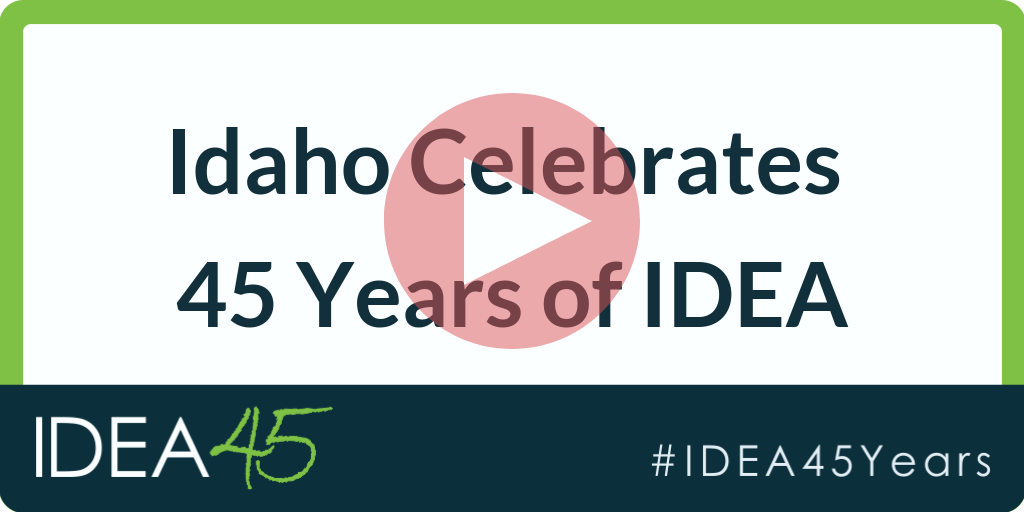 |
Idaho Celebrates 45 Years of the IDEADr. Charlie Silvia and Jeff Brandt celebrate 45 years of the IDEA. Join them as they look at education for Idaho students with disabilities before IDEA and now with examples from two families. |
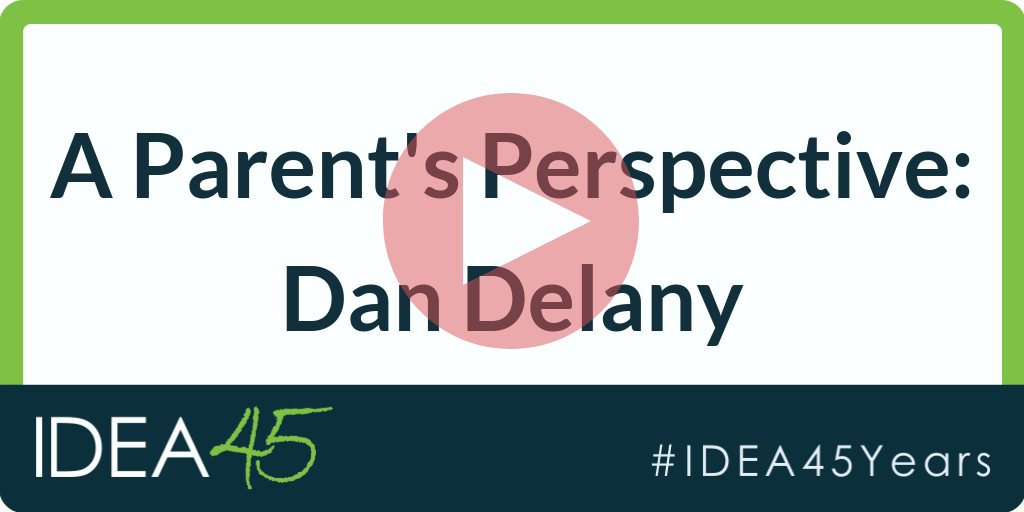 |
A Parent’s Perspective: Dan DelanyDan Delany, a parent of a child with autism, shares his perspective of the IDEA and how he has learned to be a better advocate for his son using the protections afforded by the IDEA. |
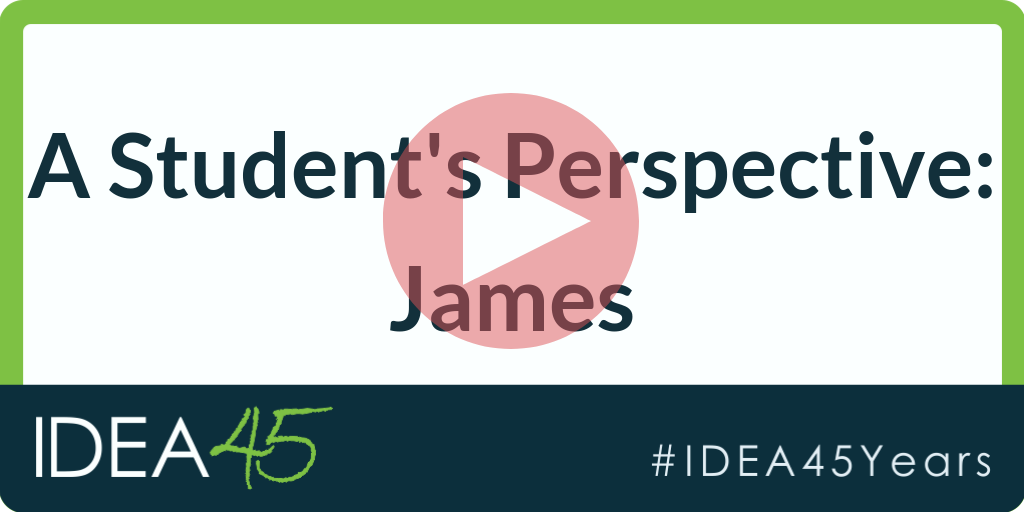 |
A Student’s Perspective: JamesJames, a student with a disability, reflects on the education and supports he has received thanks to the IDEA. |
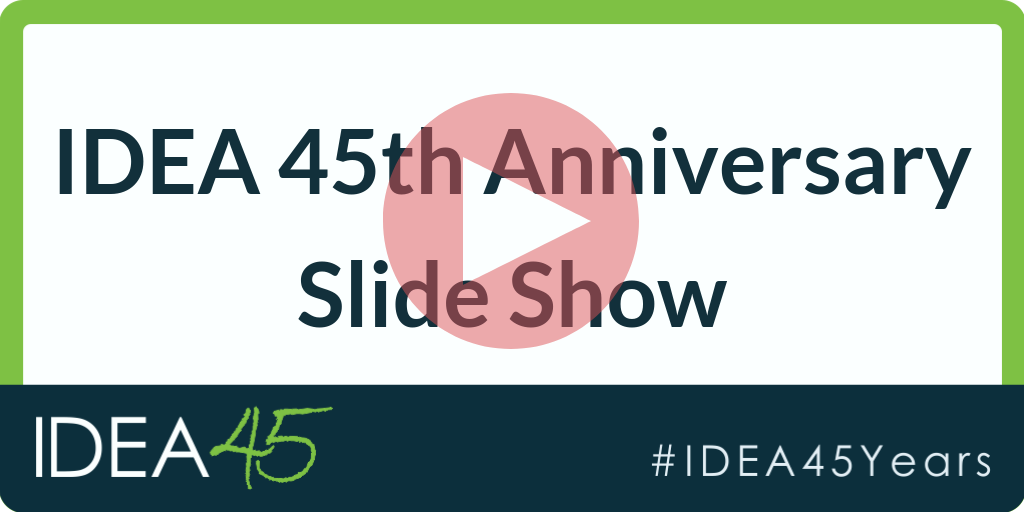 |
Celebrating 45 Years of IDEA: Slide ShowEducators and families reflect on the IDEA. This presentation features their testimonials as to commemorate the 45th anniversary of the IDEA. Audio described transcript |
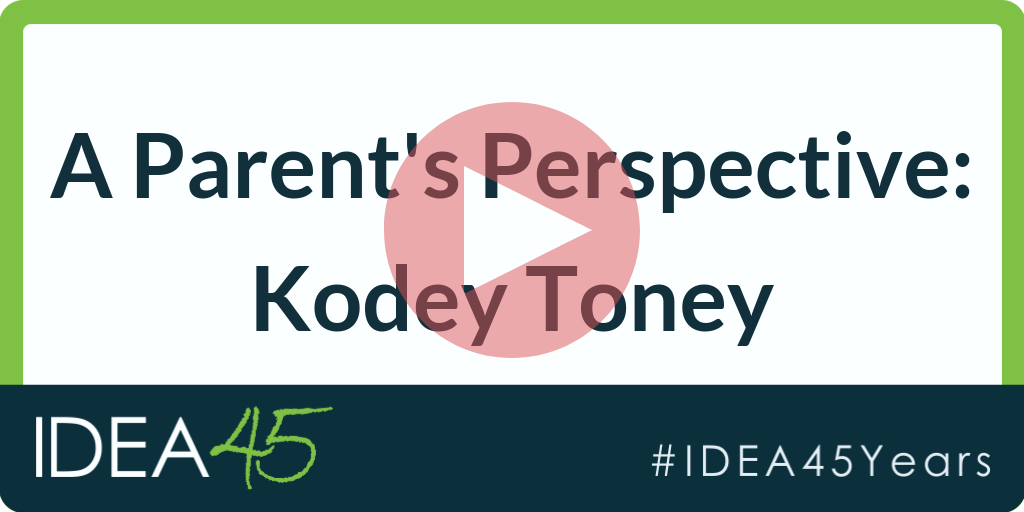 |
A Parent’s Perspective: Kodey ToneyKodey Toney, the father of two boys including one who has autism, discusses what he believes are the two most important parts of the IDEA for his family: early intervention and least restrictive environment. |
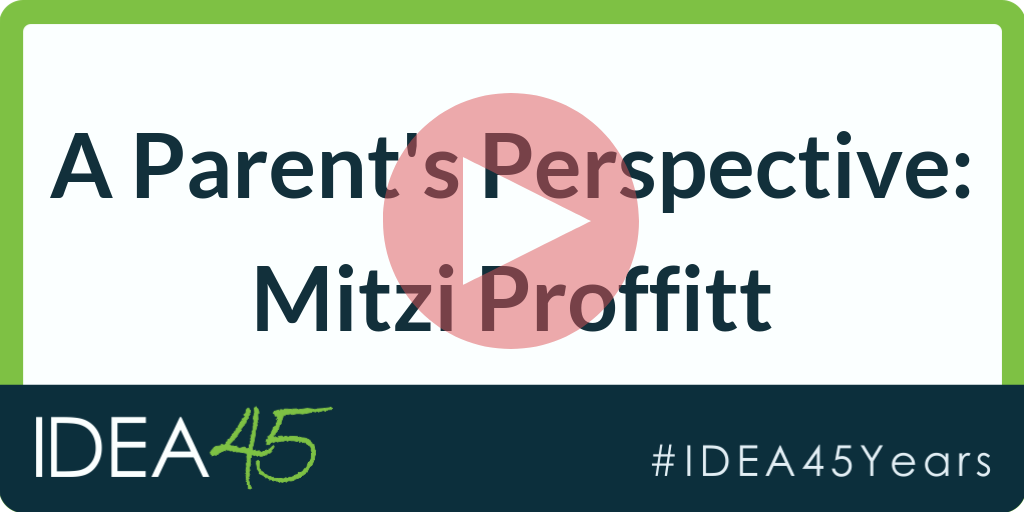 |
A Parent’s Perspective: Mitzi ProffittMitzi Proffitt and her son Joshua Williams share Joshua’s journey from kindergarten through college, which he graduated from in May 2020. It started with Mitzi advocating for her son and continues with Joshua learning to advocate for himself. |
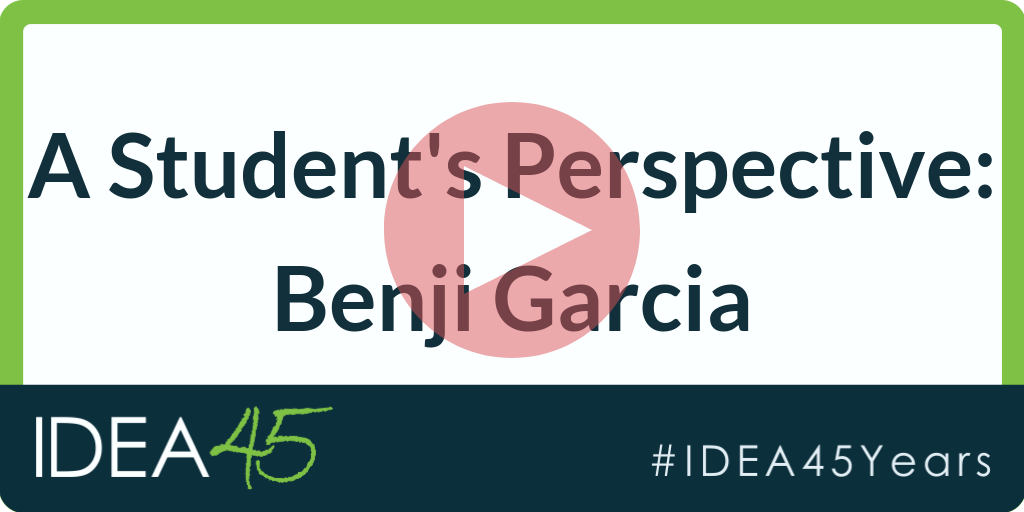 |
A Student’s Perspective: Benji GarciaBenji Garcia, an 18-year-old Texan, has received special education services since he was 3. Benji credits his teachers and aides for helping him improve his academic and social skills. |
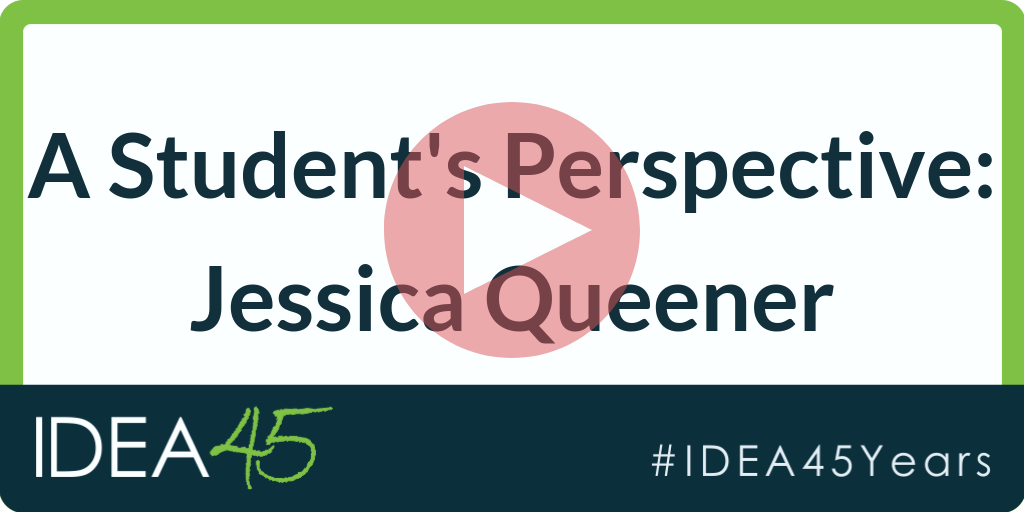 |
A Student’s Perspective: Jessica QueenerJessica Queener, an OSERS Rehabilitation Services Administration vocational rehabilitation specialist, was diagnosed with a severe to profound hearing loss at age 3. Jessica shares her experiences with the IDEA, FAPE and LRE. |
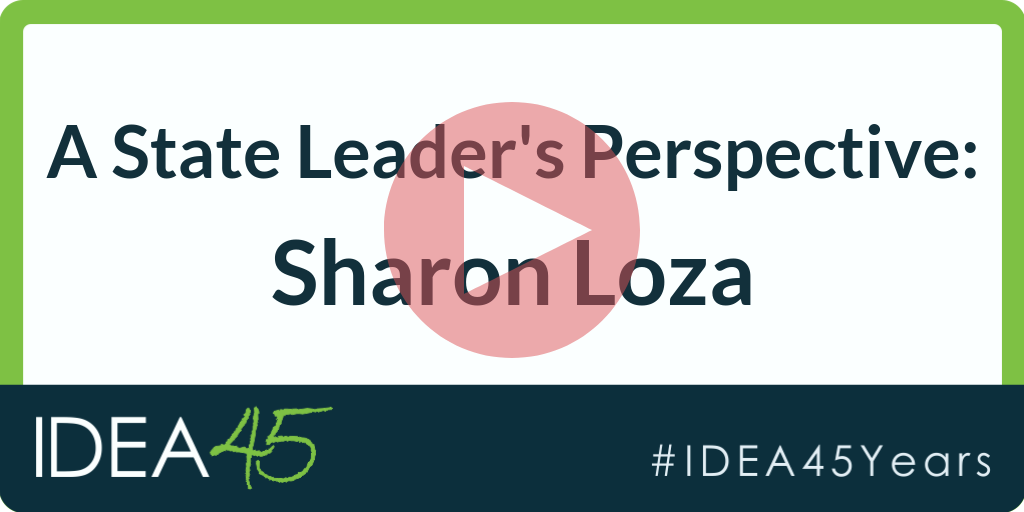 |
A Local/State Perspective: Sharon LozaSharon Loza, North Carolina Department of Health and Human Services early intervention branch head, discusses the importance of IDEA and how it has led to an increase in early intervention services. |
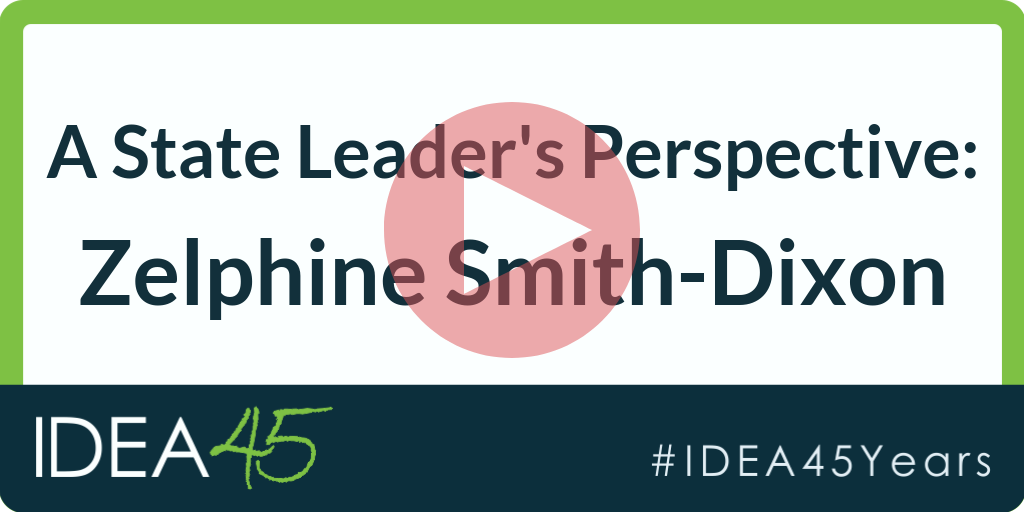 |
A State Leader’s Perspective: Zelphine Smith-DixonZelphine Smith-Dixon, Georgia Department of Education Division of Special Education Services and Support state director, shares why she believes the IDEA is so critical in contributing to the success of students with disabilities and their families. |
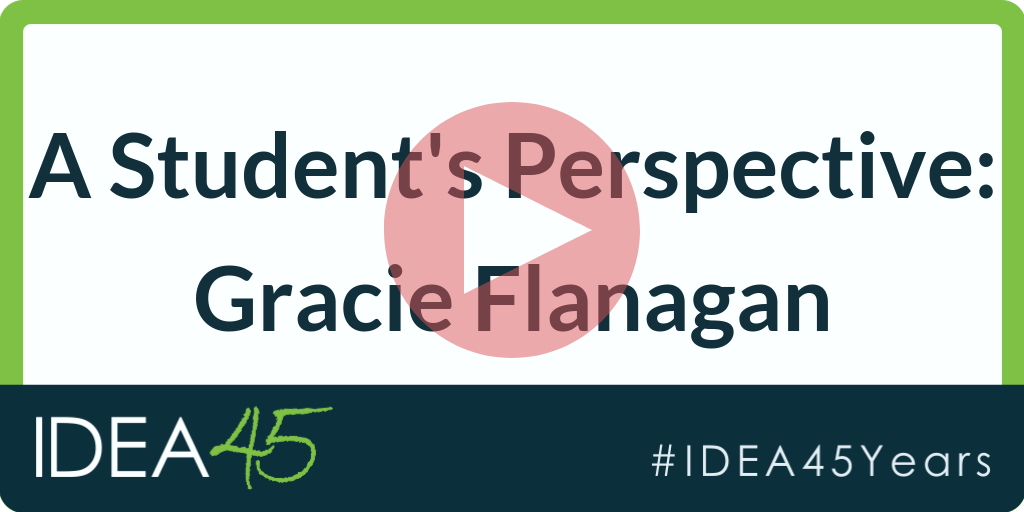 |
A Student’s Perspective: Gracie FlanaganGracie Flanagan, a high schooler, and her mom Kim talk about the importance of IDEA and how Gracie’s teachers and paraprofessionals play a key role in her education. |
OSEP Fast Facts: IDEA 45th Anniversary
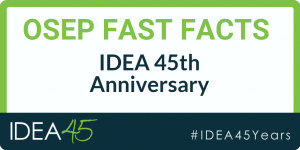 The newest OSEP Fast Facts highlights key changes to the IDEA during the last 45 years as well as facts and figures related to infants, toddlers, children, and youth with disabilities and teachers and services providers.
The newest OSEP Fast Facts highlights key changes to the IDEA during the last 45 years as well as facts and figures related to infants, toddlers, children, and youth with disabilities and teachers and services providers.
Graphics
| Large (1600×532) | Medium (640×184) | Small (240×92) | Thumbnail (96×30) | |
|---|---|---|---|---|
| Color (RGB) | 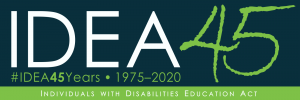 |
|||
| Grayscale | 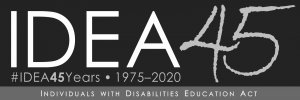 |
|||
| B&W | 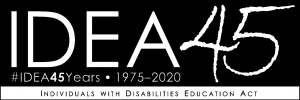 |
|||
Videos

Throughout the IDEA 45th anniversary commemoration, OSERS and OSEP will post IDEA trivia questions to Twitter. Not on Twitter? You can follow along on this page. Click on the question to find the answer.
Last modified on April 25, 2023


